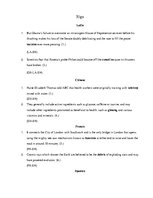-
Borrowings in the English Language
Szint:
Főiskola/egyetem
Irodalom:
20 egység
Referenciák:
Használatban
Küldés e-mailben
Az Ön neve:
Adja meg az e-mail-címet, amelyen meg szeretné kapni a linket:
Üdv!
{Your name} szerint érdemes lehet megtekinteni ezt a dokumentumot az eKönyvtárban „Borrowings in the English Language”.
A dokumentumra mutató link:
https://www.ekonyvtar.eu/w/482030
A dokumentumra mutató link:
https://www.ekonyvtar.eu/w/482030
E-mail elküldve






